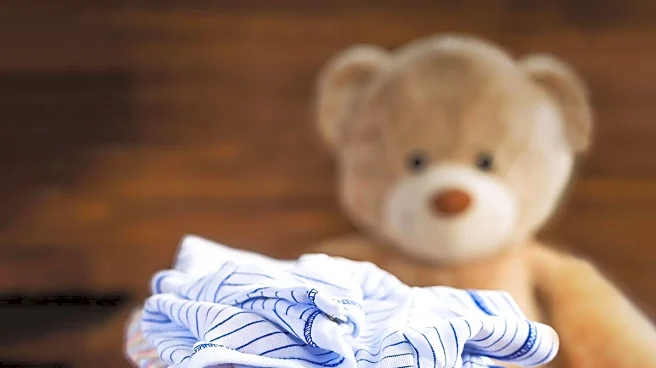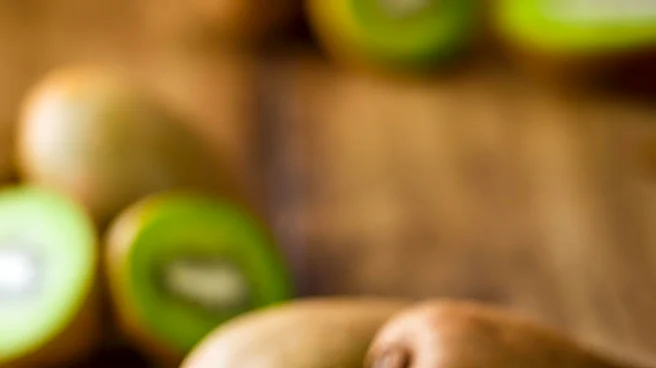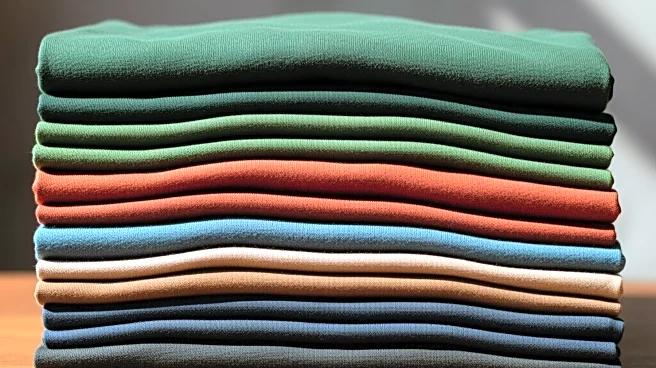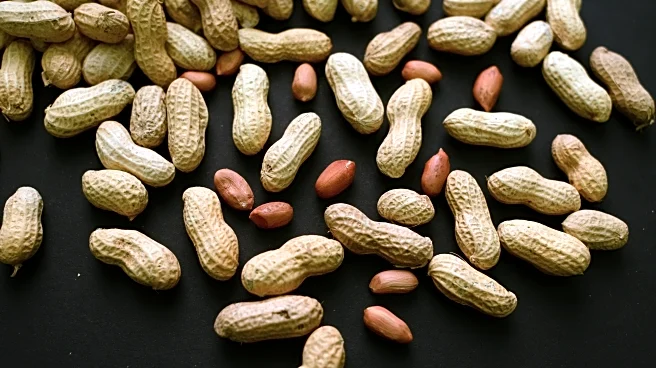What's Happening?
A scientific investigation has revealed that infant clothing may contain over 300 different chemicals, including drugs and pesticides. The study, published in Environmental Research, analyzed 43 infant garments and identified chemicals such as opioids,
antidepressants, hormones, and pesticides. These findings raise concerns about the potential health risks posed by chemical residues in textiles, particularly for infants who are more sensitive to toxins. The study highlights a regulatory gap, as current U.S. regulations primarily focus on flammability and lead content, lacking comprehensive oversight for other chemical substances present in fabrics.
Why It's Important?
The presence of toxic chemicals in baby clothes has significant implications for public health and consumer safety. Infants, with their developing organs and thinner skin, are particularly vulnerable to chemical exposure, which can lead to long-term health issues such as infertility, developmental disorders, and certain cancers. The study underscores the need for stricter regulations and better oversight of chemical use in textiles, aligning safety standards with those of other consumer goods. For parents and caregivers, awareness of these risks can inform purchasing decisions and encourage the selection of safer, organic clothing options.
What's Next?
Regulatory bodies may consider implementing stricter guidelines for chemical use in textiles, including limits on chemical transfer from fabric to skin and mandatory ingredient labeling. Increased testing for harmful substances and stronger oversight of imported textiles could help reduce exposure disparities. For manufacturers, there may be a push towards using safer, non-toxic materials in clothing production, driven by consumer demand for transparency and safety. Research into the health impacts of chemical exposure from textiles may inform future policy decisions and public health initiatives, promoting safer environments for children.
Beyond the Headlines
The discovery of toxic chemicals in baby clothes raises ethical questions about consumer protection and corporate responsibility. It challenges the textile industry to prioritize safety and transparency, ensuring that products are free from harmful substances. This issue also highlights broader concerns about environmental sustainability and the impact of chemical use on ecosystems. As awareness of these risks grows, there may be increased advocacy for sustainable practices and ethical production methods in the fashion industry. For society, the conversation around textile safety may lead to greater emphasis on health-conscious and environmentally friendly consumer choices.














